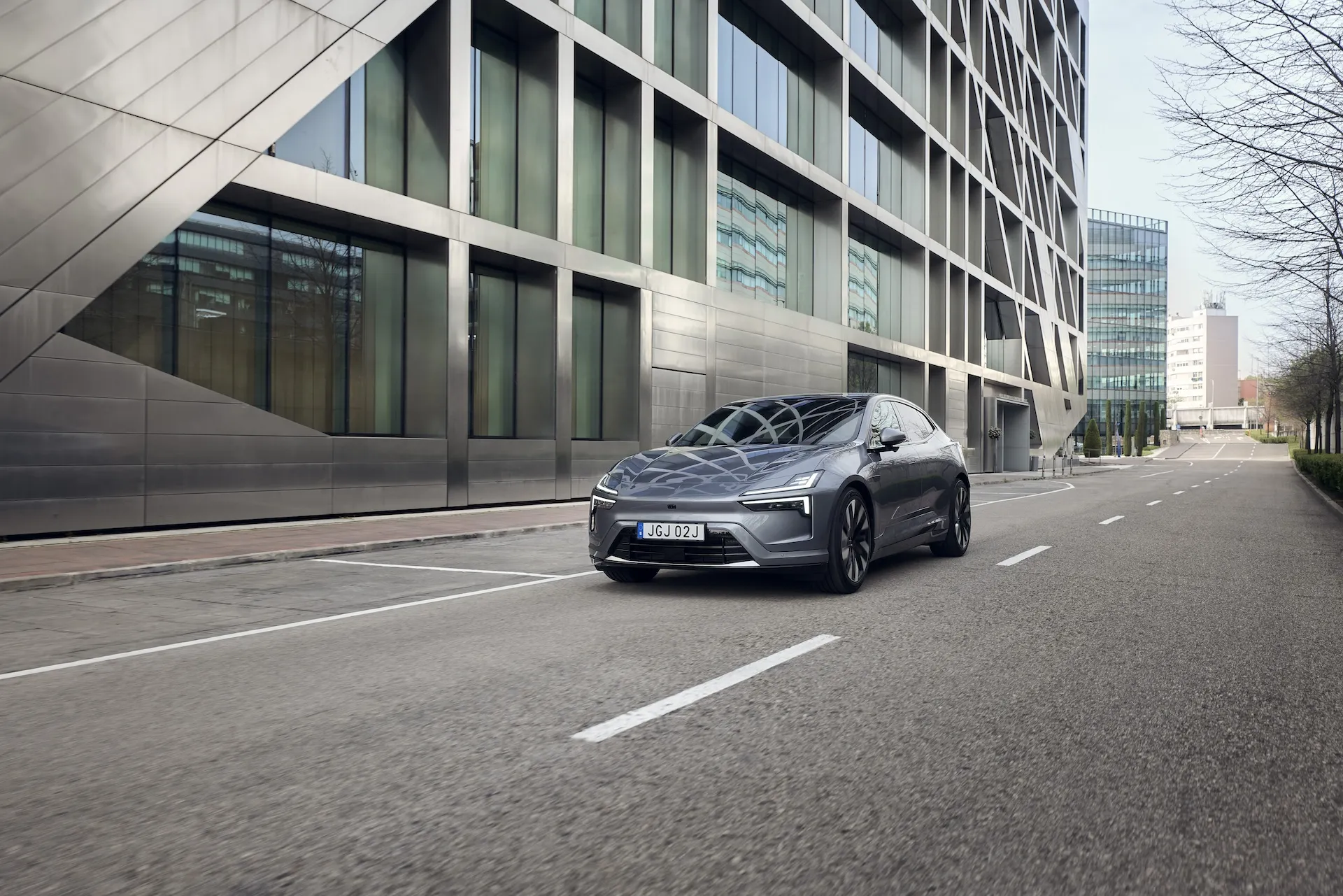-
Polestar follows up the 3 SUV with a coupe-like 4 with seats for five
-
It’s fast but flappable: the 4 has scalding electric power, but the ride needs fine-tuning
-
With Android firmware and wireless Apple CarPlay—and ambient lighting themed on the solar system—it’s a tech-forward statement
-
Will a small sales network and tariffs spike early sales?
Polestar has swung swiftly from the pricey, plug-in Polestar 1 coupe to the more pragmatic plug-only Polestar 2 sedan. It’s in the midst of launching a big three-row 3 SUV—and now, it’s pushing its fourth car out the door.
The sequentially named Polestar 4 has a coupe-like roofline and a mind to be a crossover SUV, but consider it an electric fastback sedan, slotted illogically between the 2 and 3.
Huh?
If it makes it easier, think of it first and foremost as a rival for the Tesla Model Y, Genesis GV60, and the upcoming Porsche Macan EV. It shares a platform with the Lotus Eletre, and no other Polestar or Volvo products we can drive in the U.S.
It’s an unusual arrival, and unconventional too—unlike the bigger Polestar 3 we’ve already driven. That 2025 Polestar 3 hits an electric-SUV stride, but how does this elegant entry fare? I went to drive it in Madrid, Spain, and after a couple hundred kilometers its place in the SUV spectrum became clearer. It isn’t one. Mostly, that’s a good thing.
2025 Polestar 4
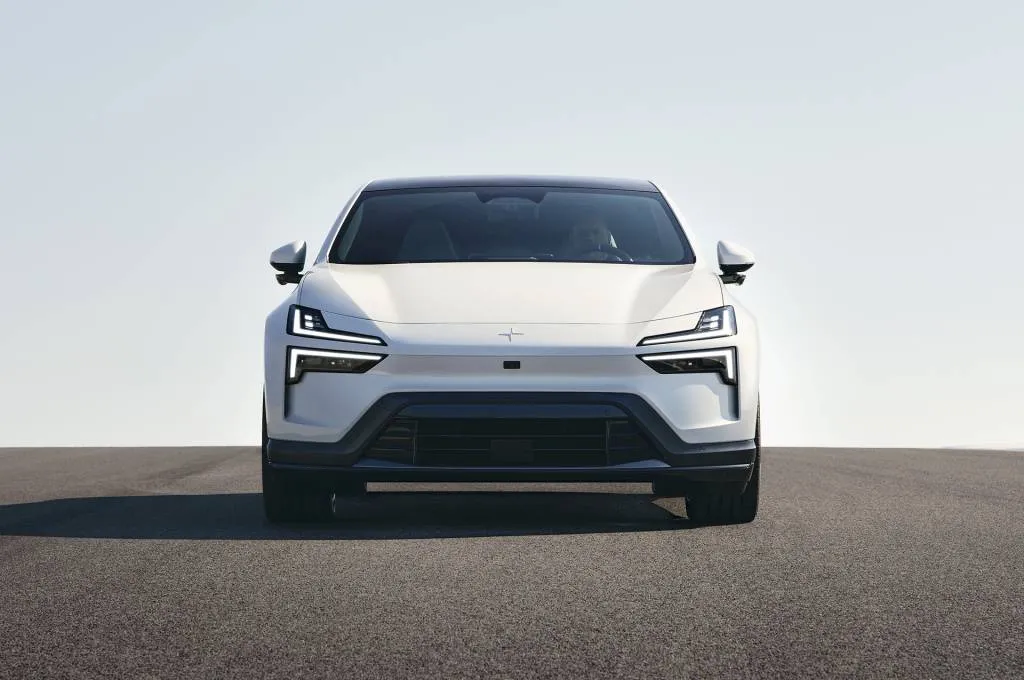
2025 Polestar 4
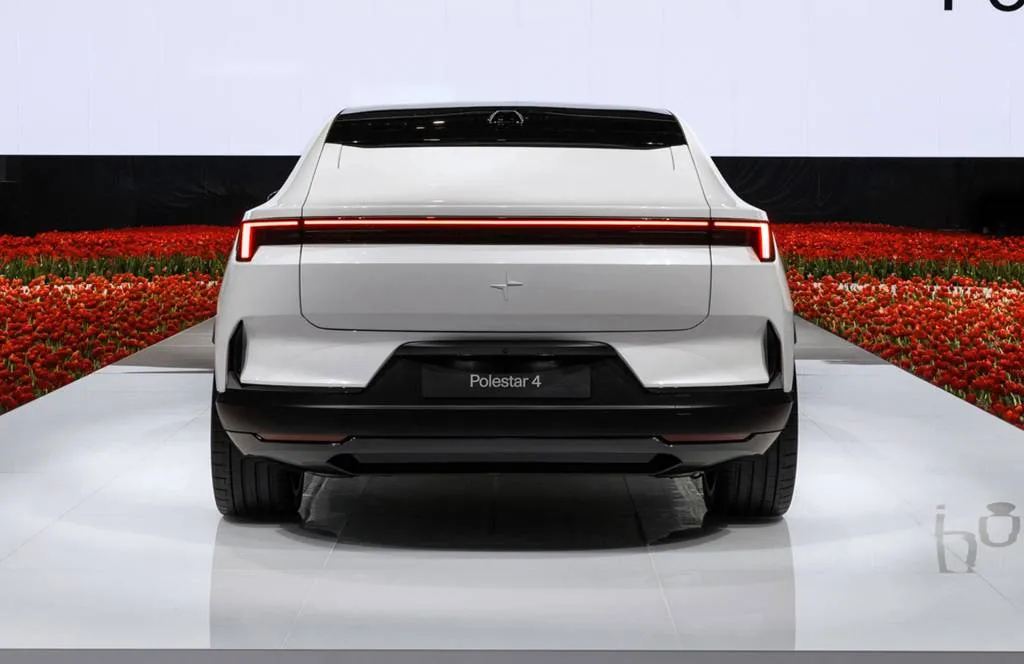
2025 Polestar 4
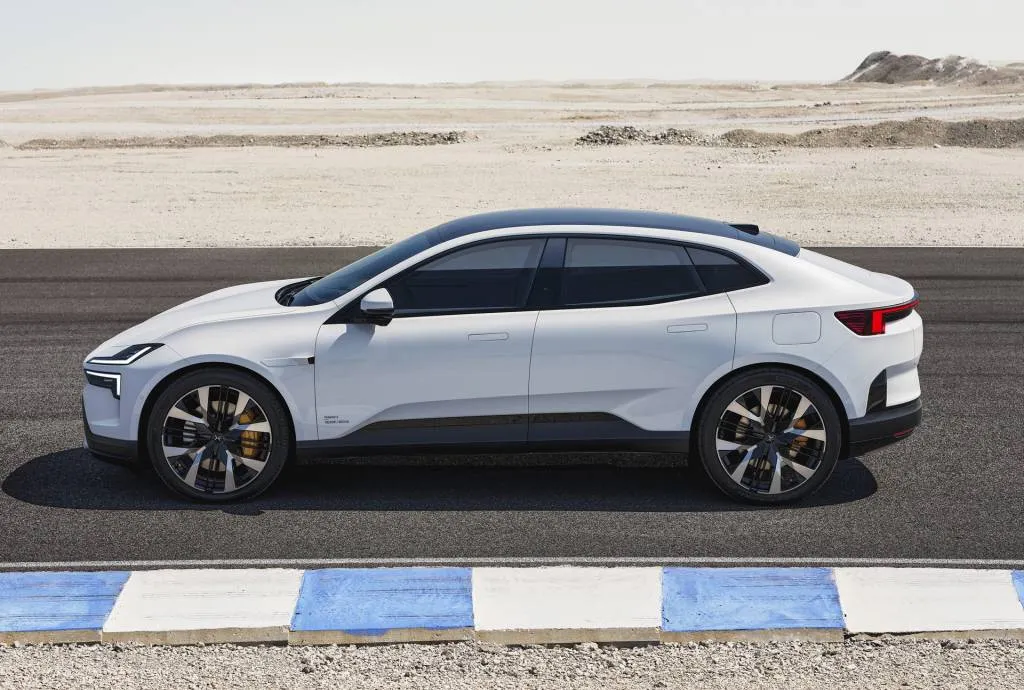
2025 Polestar 4
2025 Polestar 4 exterior and interior style
It does promise some crossover-SUV credibility, but the Polestar 4 goes out of its way not to look like one. Instead, its parent claims it to be a coupe-like crossover. Let’s take a look at the evidence. On the low nose and between pickaxe LED headlights it wears a subdued logo that lights up at night—and there’s no airfoil embedded in the hood like its larger Polestar 3 kin. Down the side its body style becomes no more clear: its lower cladding suggests SUV, while the low, raked roofline and sloped rear end want to play sports coupe. A single, slim LED bridges the rear end. With its short overhangs and long wheelbase, flush door handles, and frameless windows, it’s instantly recognizable as…nothing and everything, all at once. Because it has a defined cargo space with a decklid hinged separately from its glass roof we’re calling it a sedan, but that hot take could change.
The truly unusual aspect of the 4 is that it has no rear windshield. With a taller body panel meeting its glass roof, the Polestar 4 offers no view to the rear for the driver. Instead it adopts a camera system that generates digital views of what’s in back—like some supercars. More on that in a moment.
Inside, the Polestar 4 hews more closely to tradition, if we’re talking about five years’ worth of EVs here. All editions sport a spartan dash with a 10.2-inch digital instrument cluster, a flat-bottomed steering wheel, and a large 15.4-inch tablet-style touchscreen. Nearly all the Polestar’s vehicle functions depend on the touchscreen interface, which perches over a console that angles toward it, adorned by a dial that spins through screen displays and audio volume, and a console lid that hides cupholders and storage. A scatter of LED lights sprays on the door trim. It’s an interior so clean it almost squeaks.
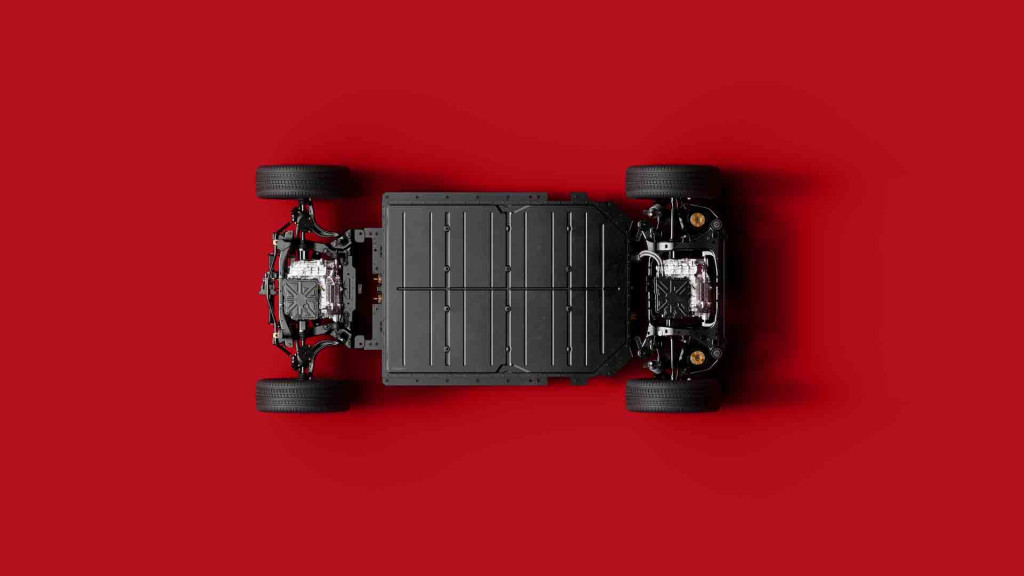
2025 Polestar 4
2025 Polestar 4 performance: Striking acceleration, rumbly ride
-
0-60 mph: 6.9 seconds (RWD), 3.7 seconds (AWD)
-
Range: 300 miles (RWD), 270 miles (AWD)
-
200-kw DC fast charging
-
One-pedal drive in any mode
-
More specifications: 2025 Polestar 4
Mercury-quick with a dual-motor powertrain and all-wheel drive, the Polestar 4’s notably slower but only moderately less captivating with a single motor and rear-wheel drive. It’s ready for further suspension and ride refinements, however.
Both versions mount a 102-kwh battery in the floor, but interpret its usefulness in two different ways. With a single motor the Polestar 4 generates 272 hp and 253 lb-ft of torque. It lands on a Polestar-claimed 300-mile estimate while it posts a 0-60 mph time of 6.9 seconds. It’s a fine blend of efficiency and acceleration.
I’d be lying if I said that was enough, because I also have driven the 2-motor 4, which taps that battery for an intense 544 hp and 506 lb-ft. Range dips to 270 miles estimated, but this Polestar 4 sprints to 60 mph in a claimed 3.7 seconds. It’s the Hot One in the duo, and ripe for a tour of the countryside.
On the road out of Madrid toward Segovia—a passel of highways, then two-laners, then bicycle-clogged lane-and-a-halfs—the 2-motor car’s strong and silent power flicked between rolling obstacles with ruthless efficiency. I’d find a slot ahead, press on the right pedal, and fly ahead, without too much of the sluggish motor engagement or pointless noise of some other luxury EVs.
Dual-motor cars have adaptive dampers to complement their copious power, but even with them, the Polestar 4 wasn’t always happy careening through curves. Sprinting through passes in Performance mode, with dampers set to firm and steering left in its standard light-touch weighting, the Polestar 4 tooled through twist-tied Spanish roads on the way to Segovia with mostly fluid moves. But on broken local pavement it grew rougher. With the available 21-inch wheels and 235/45 front and 255/45 rear Michelin Pilot tires, it wanted gentler tuning and more pliant tires, stuttering stiffly over crumbled pavement when it should be gliding. A car that looks vaguely French makes some ride-quality promises that the Polestar 4 flinches at.
Regenerative braking helps it slew softly to a stop, and its friction brakes blended in deftly when hairpins and last-second brake lights appeared ahead of us, mostly from survivor Dacia vans.
It’s rated to tow up to 3,500 pounds and has 6.5 inches of ground clearance—but the SUV part here is spoken softly, if you can hear it at all.
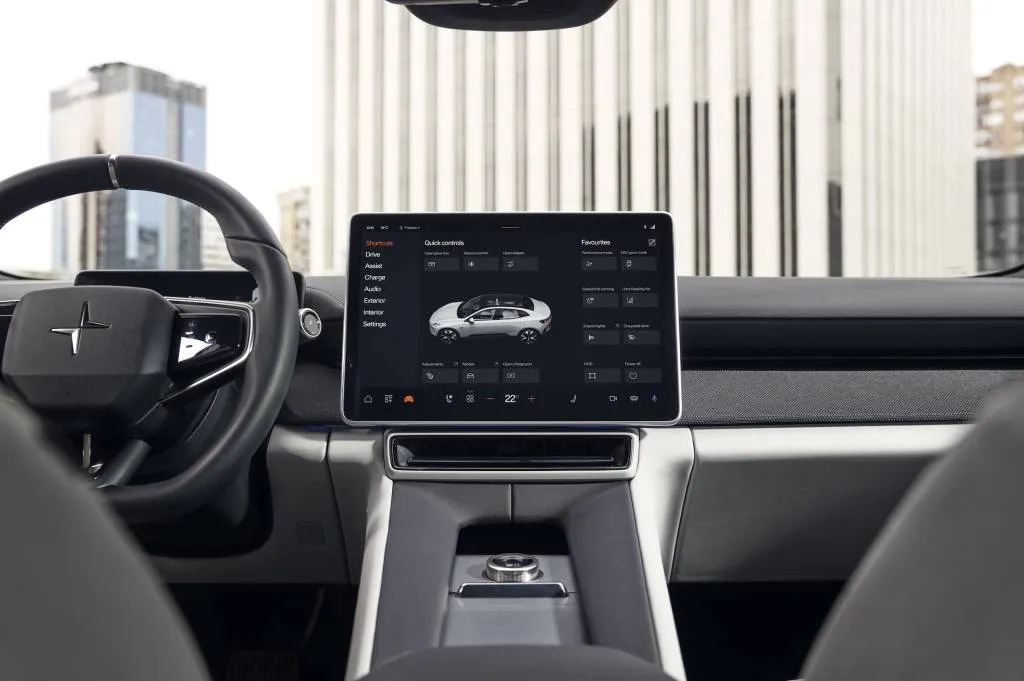
2025 Polestar 4

2025 Polestar 4
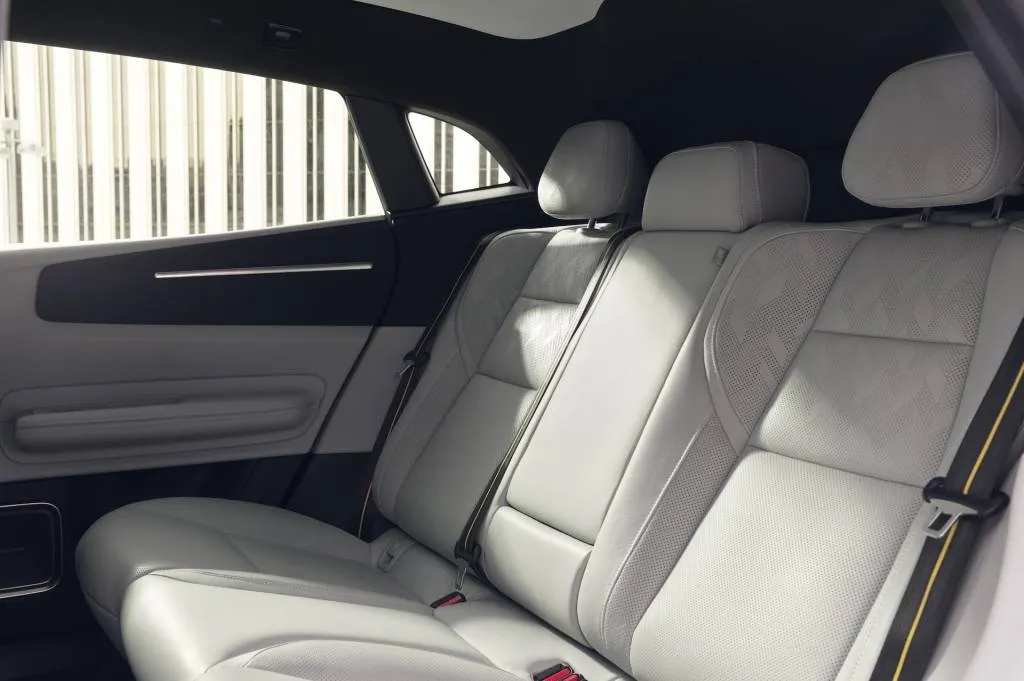
2025 Polestar 4
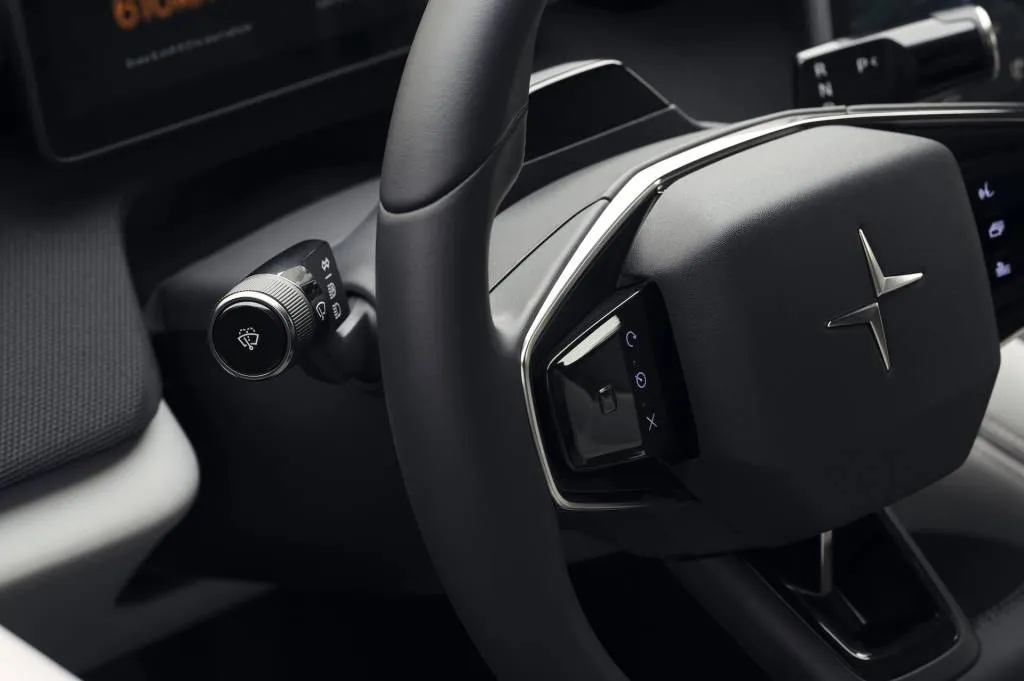
2025 Polestar 4
2025 Polestar 4 interior comfort and utility
-
190.5 in long, 118.1-inch wheelbase
-
Cargo room: 18.6 cubic feet (behind second row), 54.2 cu ft (behind first row)
-
Too many functions buried in the touchscreen
The Polestar 4 lavishes space on four passengers, with room for a fifth. Some questionable ergonomic choices may rattle less adventurous folks, though.
You’ll hear no complaints about sitting in the front seats, whether they’re covered in base textiles or available synthetic leather or even nappa leather. Like its relatives over at Volvo, Polestar believes in good seat comfort. Here, the woven textile gripped me well and the driver’s seat sported just the right amount of padding for sure-footed driving and for touring comfort. Space all around me excelled, even if the flying buttresses of the center console rode along my right knee. In a brief spell, I figured it’s the same with the nappa-leather seats, which have cooling and massage functions.
The rear seat asks all sorts of questions of its passengers. The doors don’t thunk closed like those on the Polestar 3—and once inside, the back-seat bench didn’t have enough support under my knees, though the backrest has deep channels and a recline function. I expected a claustrophobic feel as I rode there for a few dozen kilometers, but that didn’t happen. What I found more of was headroom—an inch between my 6-foot-tall frame and the glass—and suspension noise. A third person could sit between me and another me, though.
Many carefully thought-out details lift the Polestar 4 cabin above rivals. The door pulls actuate from the end of the arm in a subtly fab integration. The smooth texture of the padded dash wears soft earth colors and contrasts with the textured recycled materials on the dash and doors, which feel more grating. The gauge cluster displayed range and speed in bright orange type—the color’s adjustable in a hierarchy based on planets. Ours defaulted to Uranus. Make of that what you will.
Most ancillary vehicle functions require a tap or five through the touchscreen or steering-wheel controls. The idea is to set and forget the major adjustments, and to rely on individual key fobs that remember settings. When using the Polestar 4 as an occasional driver, however, it becomes a festival of screen taps. Mirrors, head-up display, steering wheel angle, glovebox door, it all requires a tap into the screen then the use of steering-wheel controls to modulate. If you’ve seen frustrated McRib enthusiasts hammering on a drive-through screen in vain, you’ve seen me work the Polestar’s controls for my first five minutes of access. Shortcuts and persistent functions help cut through the clutter, but it’s…a lot.
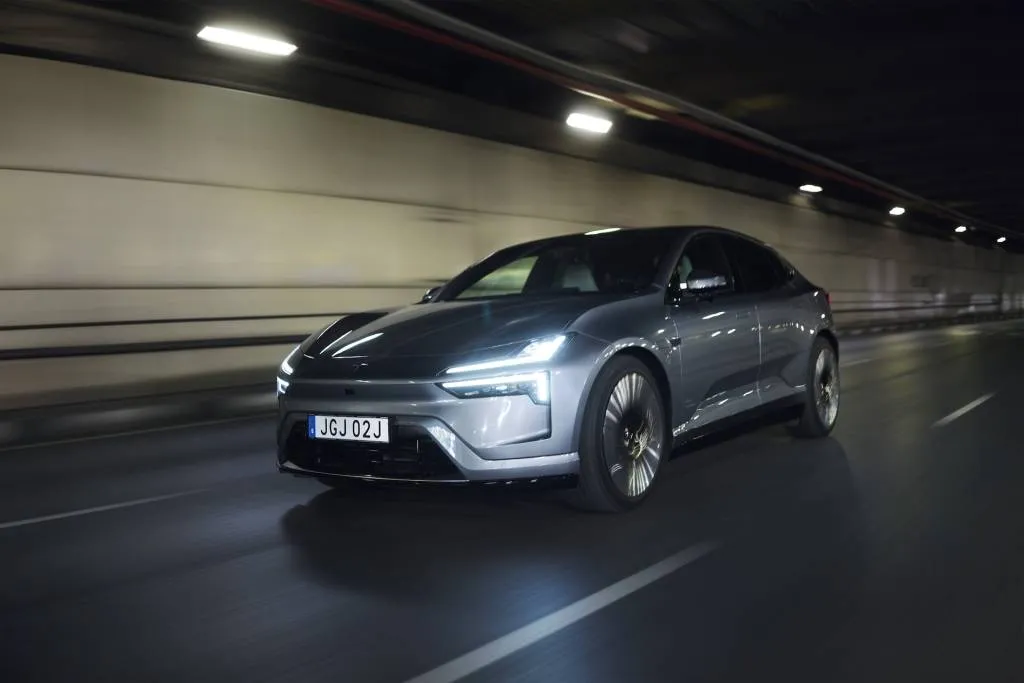
2025 Polestar 4
2025 Polestar 4 safety: Lidar’s on the way
-
Hands-free driver assistance is coming
-
A rear camera mirror subs in for the missing rear windshield
-
It can be flipped to a standard mirror
Since it’s so new, neither the NHTSA nor the IIHS has crash-tested the Polestar 4. It comes with the usual rack of standard safety equipment, from automatic emergency braking to adaptive cruise control, blind-spot monitors, a surround-view camera system, and active lane control.
Hands-free driving is on the way, but it’s not here yet. Polestar offers an option package with 12 lidar sensors, 14 cameras, and a radar sensor; knit together with computer brains it’ll make some level of driver assistance available in the future. Polestar makes no promises about “full self driving” or other such nonsense.
The controversial rear-glass situation gets resolved with a digital rear camera mirror. If you can’t get used to the display you can change it to a conventional mirror. For what it’s worth, Polestar engineers promise the digital view grants a wider angle of the road and vehicles approaching from behind—but with progressive lenses in my glasses, perceiving the image at all was difficult and forced a complete eye-turn from the road to hit the right focal point. A conventional mirror didn’t have that problem, but as it is in the Polestar 4, only provides a view of the rear seat passengers.
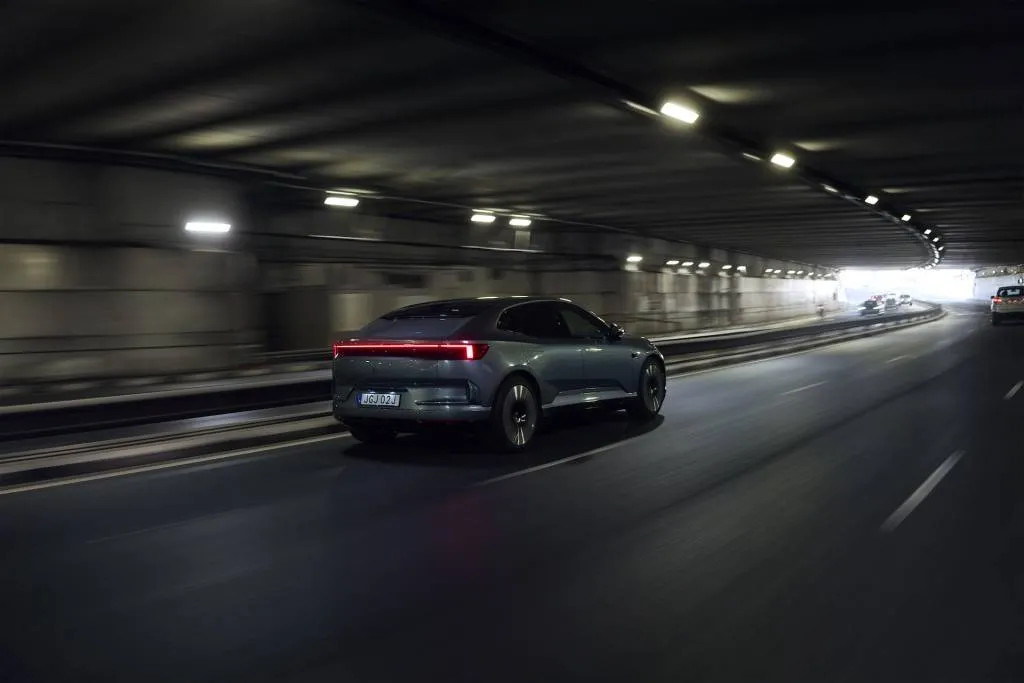
2025 Polestar 4
How much does the 2025 Polestar 4 cost?
-
$56,300 for the single-motor edition
-
$64,300 for the 2-motor Polestar 4
-
Each gets wireless CarPlay and smartphone charging
Polestar’s taking orders now for fall deliveries of the 2025 4. The single-motor rear-wheel-drive 4 costs $56,300, including $1,400 in destination. A second motor and all-wheel drive costs $64,300. Standard equipment includes a panoramic roof, a power tailgate, power front seats, a woven-textile interior, wireless smartphone charging, 20-inch wheels, and a 10.2-inch digital instrument cluster paired with a 15.4-inch touchscreen with wireless Apple CarPlay delivered through Google built-in.
A $1,500 Pilot Pack (it’s free on the dual-motor car) comes with the lidar package. The Pro Pack ($2,000 on the single-motor 4, $600 on the dual-motor 4) gains 21-inch wheels, gold-striped seat belts, and gold valve caps. The Plus Pack ($61,800 for single-motor cars, $69,800 for 2-motor cars) has synthetic leather upholstery, 12-way power front seats, a head-up display, heated and reclining rear seats, a rear entertainment screen, an 11-kw onboard charger, and Harman Kardon audio. Other options include 21-inch wheels, a charging cable, and rear side-window privacy glass.
A Performance Pack can be fitted to dual-motor cars, for a total of $74,300. It gets 22-inch forged wheels with summer performance tires, Brembo brakes with gold-painted calipers and upgraded discs, and a sport-tuned suspension.
When it launches the 2025 Polestar 4 will hail from China, but will soon migrate to a former Renault Samsung assembly plant in South Korea early in 2025. That may make it eligible for a $7,500 tax credit—instead of subject to a potential 100% tariff. Eventually, perhaps before 2026, production of North American vehicles will begin in South Carolina.
The 2025 Polestar 4 is a more risky proposition than the sleek Polestar 3, for sure. It commits to being different, before many drivers know what Polestar means in the first place. For those with an eye and a bent for the unusual and the cutting-edge, its allure might be unmistakable.
Polestar paid for travel so we could bring you this test drive review.

